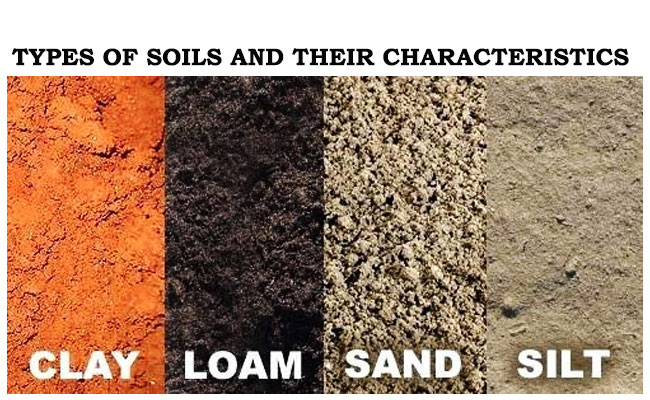Types of Soils and their characteristics

Soil is made of a solid stage of minerals and organic matter together with a porous stage that retains gases and water. In soil different minerals, organic matter, gases, liquids, and countless organisms are mixed.
Soil is categorized as follow:-
Clayey soil
It is formed with a comparatively greater ratio of fine particles. These soils contain very less area among particles. Due to lesser size of the particles, water is confined in small gaps among them. Clay soils are heavy and retain more water.
Loamy soil
It is made of sand, soil and silt. Silt particles exist among sand and soil particles. Due to humus in soil, it is suitable for growing plants.
Sandy soil
It is formed with higher ratio of big particles like sand. Bigger gaps exist among the particles of the soil and these gaps are filled through air. So, water consumption is greater since the water flows fast through these gaps. These soils are light, properly aerated and dry.
Gravel soil
Initially, three several fine earths, from the “Clay”, “Silt Loam” and “Sandy Loam” soil texture classes are blended with staggered ratios of a quartz gravel (its shape is sub rounded to rounded, average weighted diameter 6 mm).
Soil and Crops
The types of plants and crops which develop in a specific area are based on the Environmental factors and the constituents of the soil.
- Cereals similar to wheat and gram are developed in clay and loamy soils as these soils contain greater water retaining strength.
- Soils comprising of clay and organic matter with superior water retaining strength are suitable for paddy.
- Loamy soils can discharge water smoothly and they are ideal for lentils and other pulses.
- Due to better water discharging and air logging strength, cotton/loamy/sandy soils can be used.
- Clay soils comprise of humus and fertile and they suitable for wheat.

